Buying a Strain Wave Mount? You Have Options

If you’re new to astrophotography, an equatorial telescope mount is one of the first pieces of equipment you will need to purchase. Whether it’s a star tracker or a heavy-duty astrophotography mount capable of carrying large telescopes, tracking the night sky is essential to astrophotography.
Your telescope mount is the cornerstone of your deep-sky astrophotography setup. It accurately follows the apparent motion of the night sky and facilitates the capture of prolonged exposure images.
Investing in a high-quality tracking platform is critical. Thankfully, in 2024, there are some fantastic options to choose from, including a new type of technology known as ‘strain wave drive‘ or ‘strain wave gearing.’
I recently polled the AstroBackyard Facebook group to see which telescope mounts they are currently using for astrophotography. I am amazed at how many people have switched to a strain wave drive mount, specifically the ZWO AM5.
It’s About Convenience and Reliability
While I know that the telescope manufacturers like to boast about the incredible tracking performance and advanced functions of their high-end mounts, the average user just wants a product that is quick to set up and works seamlessly without headaches.
The nature of a hobby that requires a clear night sky means that you need to ‘react to weather,’ and a clear night doesn’t always occur at a convenient time. An astrophotography mount that allows you to get up and running quickly and accurately means more imaging time.
While I still use my Sky-Watcher EQ6-R Pro for plenty of astrophotography projects throughout the year, the ZWO AM5 comes out of the garage more often. I can polar align the mount quickly using the ASIAIR electronically assisted polar alignment feature and be on my way.
The ZWO AM5 strain wave drive equatorial mount.
The small form factor and lack of a counterweight (for loads under 28 pounds) mean that this thing can travel. In fact, I have traveled to Oklahoma (Okie-Tex Star Party) and Florida (Winter Star Party) with my AM5 nestled safely in my personal item bag on an airplane.
I understand that users of larger telescope systems will require a larger equatorial telescope mount with counterweights. But for compact refractor-lovers like myself, a strain wave drive mount like this is the perfect option at home and on the road.
Amateur astrophotographers are quite comfortable with autoguiding their systems, so this necessary step for precise tracking is not an issue. As long as the tripod base underneath the strain wave drive mount is stable and secure, you can enjoy counterweightless astrophotography.
How Do They Work?
The general design of the strain wave mount involves stepper motors paired with a synchronous belt to track the apparent motion of the night sky. Stepper motors are known for their accuracy and ability to divide a full rotation into a precise number of steps.
The synchronous belt reduces backlash and improves the precision even further by acting as a mechanical reduction mechanism. The belt helps create smooth tracking by reducing vibrations and providing better torque transmission.
Some of the higher-end harmonic drive and strain wave mounts use DC servo motors instead of stepper motors. These motors incorporate additional precision measures, such as encoders, which continuously monitor the position of the motor shaft.
You’ll find DC motors on the robust Rainbow Astro RST models, while the Sky-Watcher Wave series and AM3/AM5 use the stepper motor and belt drive system. Models like the iOptron HAE29EC (EC stands for encoders) add real-time periodic error correction.
The term ‘reduction ratio’ refers to the size of the fine adjustments the mount can make. In general, a higher reduction ratio minimizes tracking errors and can lead to better guiding and overall stability. As an example, Sky-Watcher and ZWO list the reduction ratios for their strain wave mounts at 300:1.
How a Harmonic Drive / Strain Wave gear system works.
More Strain Wave Drive Mounts
While it’s clear that the vast majority of the amateur astrophotography community has welcomed the ZWO AM5 with open arms, others do not like the closed-ecosystem nature of ZWO products, and I get that. The ZWO AM5 is not the only strain wave or harmonic drive equatorial telescope mount on the market.
iOptron, Pegasus Astro, Sky-Watcher, and more companies have introduced strain wave drive mounts. The iOptron HAE29 goes head-to-head with the ZWO AM5, offering a 28-pound maximum payload capacity in a package weighing only 8 pounds. You can control this strain wave mount using image capture software like N.I.N.A. on a mini PC or laptop if you’re not a fan of the ASIAIR experience.
Strain Wave Drive Mounts from iOptron, Sky-Watcher, and Pegasus Astro.
The Pegasus Astro NYX-101 is in a class above the ZWO AM5 in terms of maximum payload capacity (44 pounds) but also has a higher price tag than the AM5 and comparable mounts. iOptron has their own option in this class, too, the iOptron HAE43EC Strain Wave AZ/EQ mount.
New Sky-Watcher Strain Wave Mounts
Sky-Watcher recently announced their new line of strain wave drive mounts, the Wave 100i and Wave 150i. These units leverage the same technology and add a few handy new features, including the ability to unlock the clutches in RA and DEC.
You can read my complete Sky-Watcher Wave 150i Strain Wave Mount Review for an overview of its features and the image results using my camera and telescope from the backyard.
The Sky-Watcher Wave 100i and Wave 150i feature stepper motors and a 300:1 reduction ratio strain wave gear, just like the ZWO AM3 and AM5. Both models include ports for controlling the mount using your existing Sky-Watcher SynScan hand controller or via your PC using EQMOD or the ASIAIR.
The Sky-Watcher Wave 100i is currently priced at $1695 USD, slightly more expensive than the comparable ZWO AM3 ($1499 USD). It weighs slightly more than the AM3 (9.5 lbs) but can handle a heavier payload of about 22 pounds without a counterweight.
The Sky-Watcher Wave 150i Strain Wave Drive Mount showcased at NEAIC/NEAF.
For those who need something a little more capable, the Sky-Watcher Wave 150i is priced at $2,195 USD. This sits just above the price tag of both the ZWO AM5 and the iOptron HAE29. With this higher price tag comes the highest maximum payload capacity in this category of strain wave mounts (33 pounds without a counterweight).
As a fan of the Sky-Watcher brand (and the people behind it), I was glad to see them adopt the new technology to avoid falling behind market demand. I am sure the Sky-Watcher Wave 150i will be a big seller in 2024, and I look forward to trying one out myself when it is released.
I had a chance to see the Wave 150i in action at the North East Astro Imaging Conference in April 2024, and it looks like a winner to me. I think that many existing Sky-Watcher EQ6-R Pro owners will end up making the switch to this model when they are ready.
As you can see in the photo below, it had no trouble handling the large Sky-Watcher Quattro 150P Newtonian optical tube while mounted on a carbon fiber tripod.
The Sky-Watcher Wave 150i with a Quattro 150P Newtonian Reflector mounted to it.
Sky-Watcher Wave 100i Strain Wave Mount
- Payload Capacity: 22 lbs (without counterweight)
- Payload Capacity: 33 lbs (with counterweight)
- Saddle Type: Dual Vixen/Losmandy
- Mount Head Weight: 9.5 lbs
- EQ and AZ modes
- Compatible with SynScan hand controller
- Built-in Wi-Fi and Bluetooth
- USB-B for PC control
- Red LED backlighting for latitude scale and bubble level
- Quiet, fast slewing up to 10°/second
- Internal homing sensors on both axes
- Optional carbon fiber tripod, pier extension, and counterweight kit available
Sky-Watcher Wave 150i Strain Wave Mount
- Payload Capacity: 33 lbs (without counterweight)
- Payload Capacity: 55 lbs (with counterweight)
- Saddle Type: Single Vixen/Losmandy
- Mount Head Weight: 12.8 lbs
- EQ and AZ modes
- Compatible with SynScan hand controller
- Built-in Wi-Fi and Bluetooth
- USB-B for PC control
- Red LED backlighting for latitude scale and bubble level
- Quiet, fast slewing up to 10°/second
- Internal homing sensors on both axes
- Optional carbon fiber tripod, pier extension, and counterweight kit available
The Wave 150i can be also be controlled with your existing SynScan hand controller for visual use.
Limitations and Best Use Cases
Strain wave mounts do not use worm gears like traditional equatorial mounts. They are unique in that they can operate without counterweights while still supporting moderately sized telescopes.
Another benefit to strain wave drive mounts is that they have little to no backlash. However, they do suffer from some periodic error, which will need to be corrected using autoguiding.
In short, strain wave mounts do not track more accurately than a traditional German equatorial mount, but they nearly match their performance in a package half their size.
The ZWO AM5 documentation lists a maximum practical focal length of 900mm for deep-sky astrophotography, although I have not heard much about this limitation in the real world.
I regularly use the ZWO AM5 strain wave mount for deep-sky imaging using telescopes in the 250-800mm range. The following photo of the Triangulum Galaxy was captured using the ZWO AM5 and 115mm APO refractor telescope.
The Triangulum Galaxy captured using a 115mm refractor telescope on the ZWO AM5.
The transition from traditional German equatorial mounts to strain wave mounts reminds me of when astrophotographers went from CCD cameras to CMOS. The technology is evolving, and some folks are more welcoming of it than others.
Final Thoughts
While I don’t feel there is an immediate need to upgrade your German equatorial mount to a strain wave design, the astronomy equipment manufacturers are clearly ‘all-in’ on this new technology.
The strain wave design has clear advantages in terms of portability, set-up time, and ease of use, making it an attractive option for those looking to upgrade their telescope mount or invest in one for the very first time.
I have personally had a great experience using the ZWO AM3 and AM5 mounts with my astrophotography telescopes and have taken some great images with them. I now find myself recommending an AM5 over a traditional EQ mount to beginners asking for advice.
Have you experienced a strain wave drive mount yet? Let me know what you think in the comments.
The Big List of Harmonic Drive and Strain Wave Mounts
Here is a list of every harmonic drive and strain wave telescope mount on the market (that I could find). There are new strain wave mounts hitting the market every year.
Some of the key manufacturers in this category that were not mentioned in the article are Hobym, Rainbow Astro, and WarpAstron. While I have not used any of these brands (yet), I have heard good things from the astrophotography community.
To stay current with the latest strain wave telescope mounts available, be sure to visit the ‘telescope mount‘ section of the High Point Scientific website. If you sort the results by ‘most popular,’ you will see many of the strain wave mounts mentioned below.
- Hobym Crux 140 Traveler
- Hobym Crux 170HD
- Hobym Crux 200HD
- Hobym Crux 320HD
- iOptron HEM15
- iOptron HEM27
- iOptron HAE29
- iOptron HAZ31
- iOptron HEM44
- iOptron HAE43
- iOptron HAZ46
- iOptron HAE69
- Pegasus Astro NYX-101
- Rainbow Astro RST-300
- Sharpstar MARK III
- Sky-Watcher Wave 100i
- Sky-Watcher Wave 150i
- WarpAstron WD-17S
- WarpAstron WD-20
- ZWO AM3
- AWO AM5
Trevor Jones
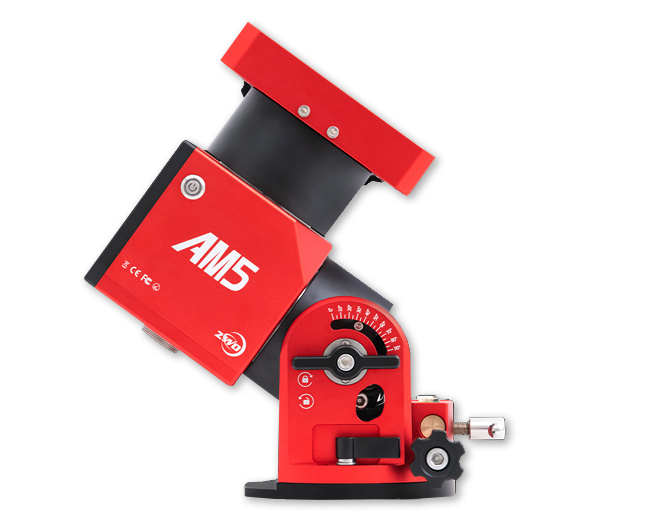




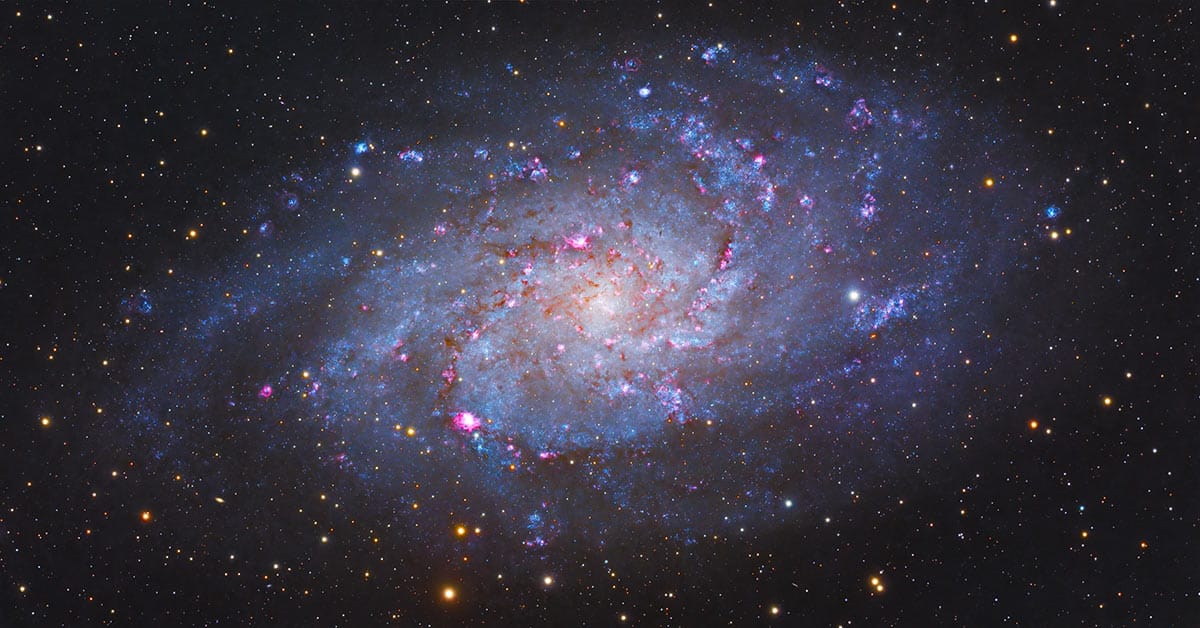
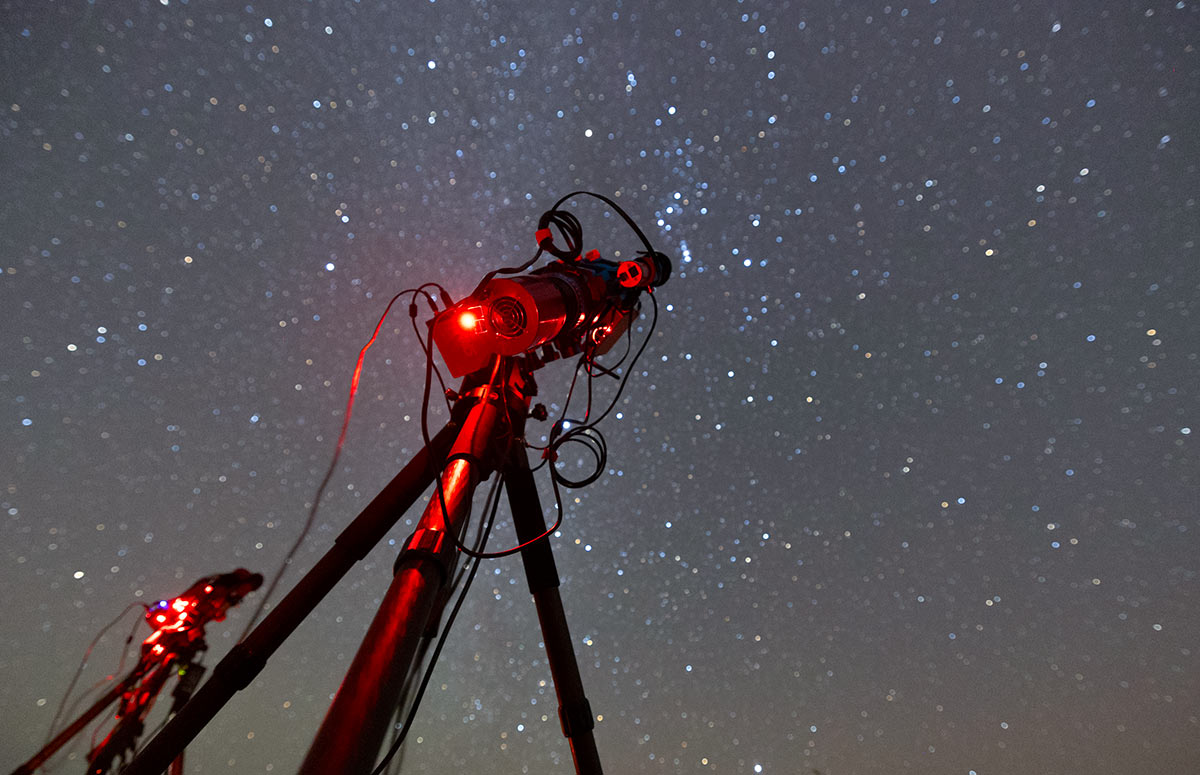
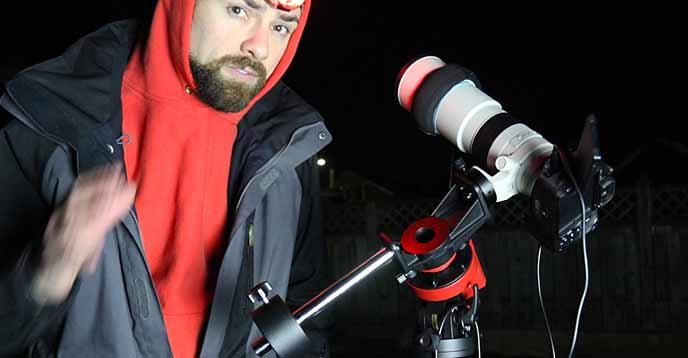

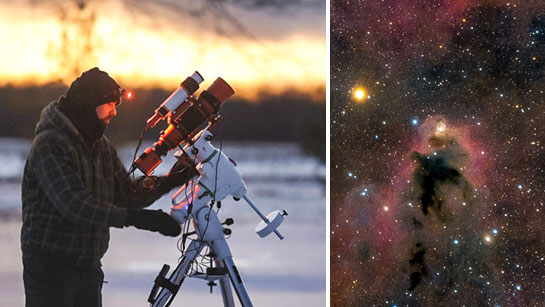
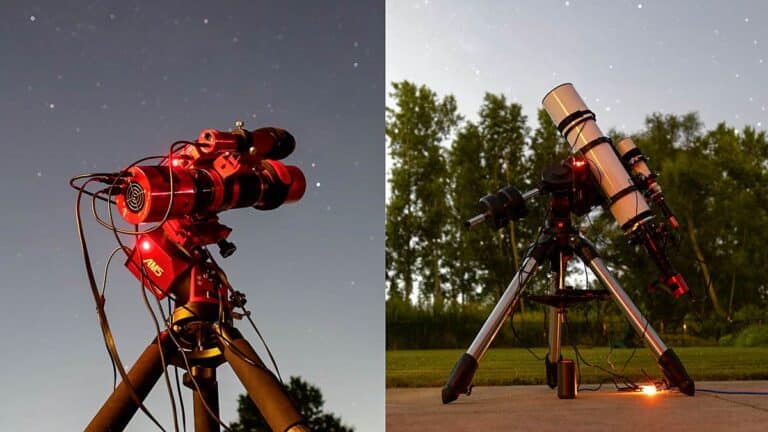
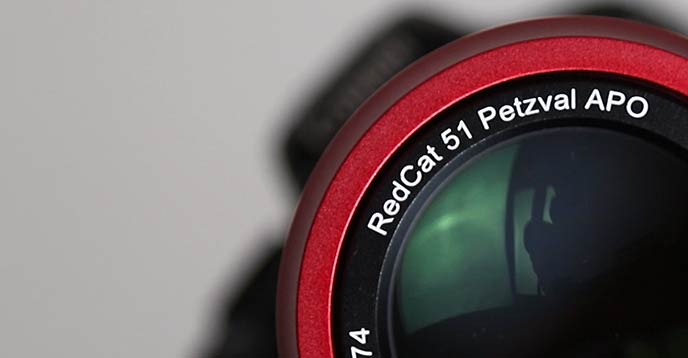
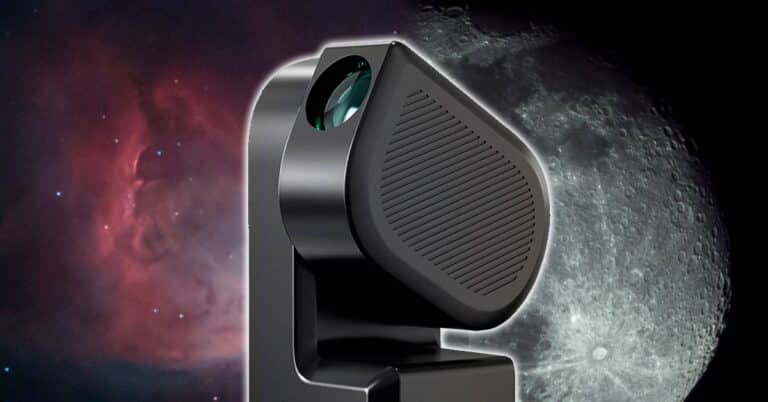
I agree fully with your statements and observations .. I have a Celestron CPC (with wedge at times), NEQ6-R Skywatcher and a AM5 ..
With the exception of using the CPC for planet work I have extensively used the AM5 in preference to the NEQ6 mainly (as you have already stated) versatility, ease of use (with ASIAir) and ease of setup.
I use a Skywatcher ED72, Celestron 8N and ZWO FF107 on the AM5 with little to no dramas, hence the NEQ6 is getting less ‘air time’ but I know it is a good mount so will not be parting with it anytime soon.
I am considering the Skywatcher 150i as an additional mount in the future but need to justify it to myself first.
I am still on a learning curve with astrophotography (see waterford astro on insta or youtube for examples) and know I have a long way yet to go ..
On another note, I follow (and have followed) your advice and suggestions in the past and will most likely do so in the future .. please keep up the great work ..
Regards
Glenn
Thanks for the kind words, Glenn. Now following you in Insta 🙂
I went with the Rainbow Astro RST-135e two years ago and absolutely love it. I was looking for the absolute best non-counter weight mount possible and this has an encoder. But I would love to know if others have come out that are even more accurate. Yes we all must guide with these scopes but I wonder if the 135e has been one upped by another mount or not. And didn’t someone make a hybrid mount that one axis is work and the other is wave?
Imagine a “wave mount shoot out”! (Hey that rhymes!)
I have one of the original EQ6 mounts for my 9.25in SCT. As I’m getting back into the hobby after a long absence, one of these newer mounts will be the perfect upgrade path. We’ll see how the market shakes out. I think 150i is my front runner right now…..
I have a HEQ5 which I loved and bought an AM5 so I could run two rigs at the same time (clear nights are not to be wasted). I liked the ease of setup and the tracking so much I found myself using the AM5 more and more and just bought an AM3 for my smaller rig. Probably going to sell my HEQ5 to someone that will use it. I hate to have it just gathering dust.
I hear folks complain about the ZWO eco structure but I kind of like knowing that a piece of equipment will work with another piece of equipment without all the config hassle to get different manufacturer equipment to talk to another make of equipment. I also (knock on every piece of wood I can find) have had no issues with any of my ZWO equipment and have been pretty happy with it.
Keep up the great work, Trevor. I can not tell you how much I learned from you getting into astrophotography and continue to learn from your articles
Hi,
Thanks for this article, informative and covers a lot of equipment.
Regarding the 900 mm focal length “limitation”, I am wondering if an 8” SCT (18lbs incl cameras) with a 2032 mm focal length would be ok for Astrophotography on the larger mount, or even the smaller with counterweights?
I think you should be fine with the counterweight on there – as long as the tripod itself is weighted down to avoid tipping over.
waiting for an AM7.
Any insight on why we do not see mounts with greater payloads/longer focal lengths? Are they coming?
Great website!
Hi Trevor – First I really want to thank you for your excellent work helping beginners in astrophotography to find their way in this beautiful hobby.
I personally started in 2020 buying a Canon EOS Ra as my first astro camera and a Skywatcher Adventurer Mount. Later I purchased the new Skywatcher Gti with Goto-Function. It worked very well with the Camera and the RedCat 51. But as I was planing to go for a larger telescope it was clear that I will first need a mount with a higher loading capacity.
I had almost ordered the Skywatcher EQ6-R when I had the opportunity to buy a used ZWO AM5 in excellent condition. I use it in the garden of my home (bottle 4-5) and also on the hills nearby with better atmospheric conditions. As you mentioned it is easy to carry around, fast to install and polar-alignment is straight-forward with the ZWO ASIair. The built quality is excellent and the guiding performance is very good.
A month ago I bought the ASKAR 103 APO and the mount has absolut no problem to handle this telescope together with a ZWO 2600MC duo Astro/Guiding Camera. The carbon tripod with the extension is very solid too. I like the fact that I can control the whole system via mobile phone or tablet via the ZWO ASIair Minicomputer.
You can see some of my work on beatwirthmuller on Instagram and soon on Astrobin.com
I chose to buy the Rainbow Astro RST135 strainwave mount.
I upgraded to this mount from a CGX for ease of transport , setup, performance.
I have been using this with my SCT 9.25 scope , for more than a year with no issues.
There are a number of reasons why I chose this brand .
1. On the market for longer period time with no real problems
2. Produced by a robotics company with long history of building precision motion control systems
3. 5 year warranty
4. lighter weight for equal or more weight carrying capacity( wt 3.3 lbs, wt capacity 30lbs, w counterweight 40lbs)
5. Uses servo motor drives (which my experience in motion control systems and robotics) are superior to steppers motors.
The servos allows you to power with 12 – 16 vdc. The higher voltage translates to better torque/performance for heavier loads.
6. Control via any astro software via ascom interface
7. Ascom interface panel shows detailed readout of all important readings of the mount ,
Temperature (main board, motors), Mount position, Motor power, Event log and others
8 . Configure as equatorial or Alt/Az
I do run my mount at 15Vdc (home made 12 to 15 vdc converter) for peace of mind with this scope.
If you are interested in higher weight capacity in a strainwave, then look at the Rainbow RST300
Wt 18.7 lbs, carry capacity 66 lbs (no counter weight), 110 lbs w counter weight
Hi,
I am more than happy with the simplicity of the AM5 and Asiair: I can start imaging and guiding after one minute or two ! When I think of the nights spoiled trying to center an object or to start a decent guiding…
The only issue that I have is sometimes a strong noise and inacurate slewing at the start, especially in cold weather. Using the HD option helps, but not always. Then I have to start again from the home position, and it works.
I use a 200/1000mm newtonian, and with the camera and filter wheel, it is difficult to estimate the approximate right balance !
Appreciate the summary and details in this article! I’ve used the AM5 (and recently got an AM3 for travel for the smaller scopes, namely the Zenithstar 73 APO that I bought based almost entirely on your review). This has been my first real year in astrophotography and I wanted to mention related to focal length I routinely use a Celestron Edge HD 800 with the AM5, OAG, and so on with very little problems. That’s a focal length of 2032mm and it takes amazing pictures. The only real problem I have is occasionally with auto-guiding, but only when I use a broadband filter because the guidestars become fainter in Bortle 5-6 skies. I did about 10 hours of the bubble nebula last fall with the HD 800, AM5 and I am very happy with it.
I’ve posted my photos on Instagram (@sumarimike – I don’t sell anything!). The only reason there are so few in the last year is that I was 1) learning, and 2) I live in the Seattle area where the skies are more often rainy than not. Looking forward to this summer. Working more with mono imaging this year as I have time.
Yor posts and reviews really have helped me a lot this past year as I learned, found a problem, then saw you’d already solved it. Thanks, and, clear skies!
Hi Trevor,
I would like to know if you have knowledge if the skywatcher mounts, the Wave 100i or Wave 150i are compatible with asiair pro or asiair plus.
Thanks for your site.
Regards
Yes they are!
Trevor, I am interested in the ZWOs. Have a Red Cat 51 WIFD. AM3 or new AM5N? Or perhaps the new Skywatcher Wave 100i? Would especially appreciate your thoughts between AM3 and new AM5N. If I went up in scope it would probably be the Red Cat 71 WIFD. Just a backyard amateur.
By the way, fantastic website and content.
The new strain wave mounts are certainly attractive, particularly if portability is important, but my concern is the much larger PE than traditional mounts. iOptron’s literature regarding their strain wave mounts says that the larger PE means that much shorter guide camera exposures (e.g. 500 ms) are required to compensate, which can be problematic for OAGs and is generally discouraged with guiding software (you end up chasing the seeing). Right now it’s difficult to come up with a compelling reason to make the switch from my GEMs.
I know that this review is for astrophotography, but, I wanted to know how good this mount is for visual use with an 8″ SCT. Without the counterweights, is it stable enough to be used with a 1.75″ tripod in alt-az mode so that I can focus it without much vibrations just like the belt drive Eq mounts like EQ5?